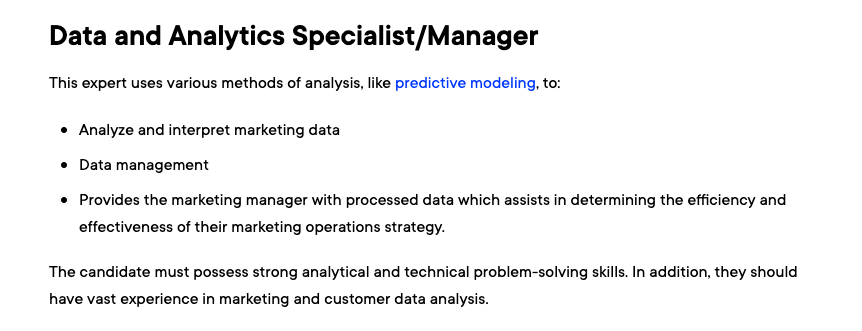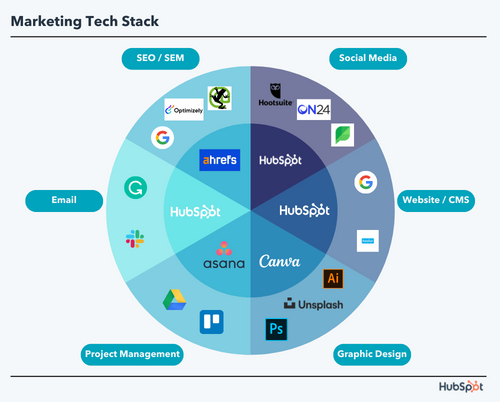Why Personalization at Scale Can Make (or Break) Your Business
Today’s consumers expect personalization at every touch point. An integrated approach is the only way to make their interactions with your brand seamless.
As countless marketing messages flood email inboxes, McKinsey research suggests 71% of customers expect the messages they receive from brands to be personalized—and 76% are frustrated when they’re not.
Personalization takes many forms. A brand could remember the last item a repeat visitor bought and suggest a complementary product or offer a loyalty discount based on purchase history.
That might be a piece of cake for brands with a small number of customers to serve. It is much harder for enterprise brands with millions of consumers. For them, personalization requires technology. Not even the world’s best data scientists could keep up with that amount of information on their own.
Personalization is all about relevancy to the customer. Are you providing them with the information they need when they need it on the channel they’re searching for it?
McKinsey estimates there are billions of dollars waiting for organizations that can strategically implement hyper-personalization at scale. In fact, the organizations in the top quartile of performance using personalized communications will generate over $1.7-$3 trillion in value over the coming years.
What are the benefits of personalization at scale?
Marketers have been trying to master personalization since the dawn of the Internet. The first approach to collecting the data needed to personalize experiences leveraged web browser tracking tools and third-party cookies.
These efforts were, in some ways, motivated by the need to serve customers who increasingly demand more relevant and personalized experiences. Tech innovations and business growth goals have driven marketers to engage more often over more channels, resulting in digital overwhelm. Consumers can’t leave the house without seeing an ad. In fact, they don’t even have to leave the bed in the morning so long as they wake up with a smartphone charged and ready on the bedside table.
Everyone with a web connection knows brands are blasting customer inboxes and social feeds with marketing messages. It gets annoying—and no one wants to annoy their customers. So how do you break through the noise? Become more relevant.
McKinsey research found that 76% or more customers will recommend a brand and purchase or repurchase from a brand that offers a personalized experience. Personalization makes customers feel seen, heard, and understood. Isn’t that what we all want as humans? And for those metric-minded folks, it should matter to you too. When brands don’t take steps to make the experience relevant, it results in lost customers.
How do brands achieve personalization at scale?
Customer data is vast and complex, especially when you consider all the work that goes into capturing, maintaining, and leveraging it. And data is essential, my friends.
When you capture, track, maintain, and leverage your data, you have the keys to the relevance kingdom! Data tells you what your customer wants and needs and how you can help (at least for the problems your business can solve). But data also requires sound rules and governance to ensure you follow consumer privacy laws.
Easy, right? Only if you’re a fan of 1000-piece puzzles… that are double-sided. First-party data can help.
1. First-Party Data
First-party data is the information you get directly from your audience, whether that’s your customers, site visitors, or social media followers. The information could include demographic information, behavioral interactions with your brand site or product, social conversations, purchase history, and more.
First-party data is more important now than ever, given that browsers will soon discontinue third-party tracking cookies. While Google was the first to make the announcement and the slowest to implement this change, it’s important to consider how it will affect your marketing campaigns. How will you incentivize customers to share their information with you?
Content gating has historically been the most popular way to encourage customers to provide information, but it’s quickly becoming a deterrent. You want your content to be read and get that engagement; free content is becoming more and more relevant.
Don’t fret. There are other ways to obtain customer information. You can get emails through newsletter subscriptions, discount promotions, or virtual event registrations. The key here is to provide value in exchange for data.
2. Integrated Technology
You also want to ensure all your automation tools work together and talk to each other, so you have consistent information across platforms. For example, if you use Salesforce for managing sales campaigns and Hubspot for marketing, make sure there is an API connection between them, so sales can use the data from Hubspot to make more informed decisions.
Every touchpoint in the customer journey matters. Whether a visitor comes to your site for information or if they add an item to their shopping cart, it’s important to track each interaction all the way to a purchase.
Given the wide volume of customers and the vast array of interactions brands have with them, tracking would be impossible without the help of an integrated MarTech stack. Make sure your tools coordinate for the benefit of your lead funnel. Your sales team will thank you, I promise.
3. Talent
You’ve got the data; you’ve got the tech—now you need the talent. You may already have the skills you need on your team, or you may need to hire more people to take on the day-to-day personalization initiatives. One thing is certain: if you use personalization correctly, the extra personnel spend will return multi-fold to your business.
If you’re sifting through old data in a customer database, hiring someone up to the task might be best. Whether this person is a part-time consultant or a full-time manager who will oversee the day-to-day of your personalization strategy, you want someone who has technical expertise with your platforms.
The ideal candidate is well-versed in business intelligence, data analytics, lead qualification models, and API calls to connect your systems. They’ll likely partner with your head of marketing and your head of sales and sit within the marketing operations team.
4. Process
Once you’ve got your data, tech, and talent, the next step is to create a process that will help you not only create your data collection plan but figure out how to categorize it, qualify leads, and maintain the data so all the right parties have access to the information they need.
This complex process requires dedicated people to analyze customer data to find patterns, signify important demographic information, and create a qualification process that can help your marketing and sales teams identify the right fit for your product or service.
Hubspot Properties has a feature that highlights each known contact’s interaction with your brand. You can integrate this feature and functionality with Salesforce as well.
5. Leverage, Maintain, & Optimize
Once your setup is complete, it’s time to leverage your data to create better content for your prospects. Data from your customer journeys can also inform campaigns to target prospects more strategically.
Be sure you always maintain the connections between applications in your MarTech stack. Updates to one platform can disrupt integrations, so make sure you have a process in place to ensure your data makes its way into the lead funnel.
Finally, optimize your campaigns based on performance. Humans are complicated—at least, that’s been my experience. We sometimes don’t even know why we do the things we do. So predicting and analyzing behavior is a psychological experiment. Welcome to marketing.
Once you gather data on your ideal customer, optimize your approach based on the trends you see for specific prospects—for example, by updating your content campaigns or persona-based nurture streams.
No matter your approach, personalized experiences are crucial for developing continued customer engagement and loyalty. Make sure you have the right data, tools, talent, and processes in place to deliver personalized experiences at scale.
To stay informed on all things content, subscribe to The Content Strategist for more insight on the latest news in digital transformation, content marketing strategy, and rising tech trends.
Image by uniquepixelGet better at your job right now.
Read our monthly newsletter to master content marketing. It’s made for marketers, creators, and everyone in between.








